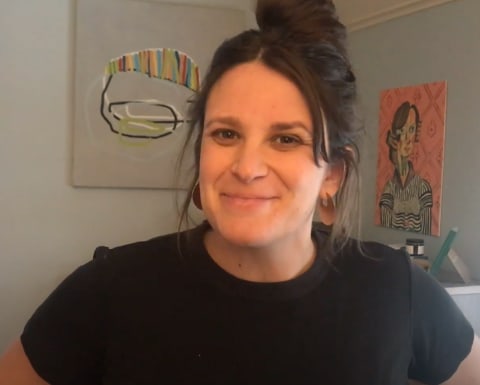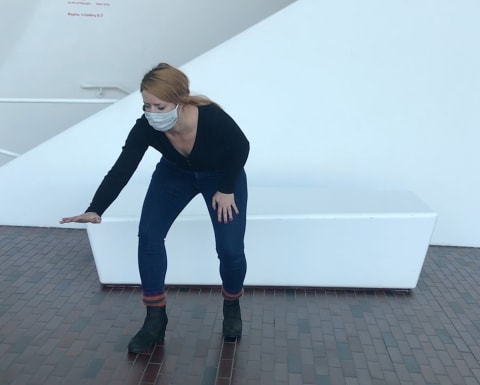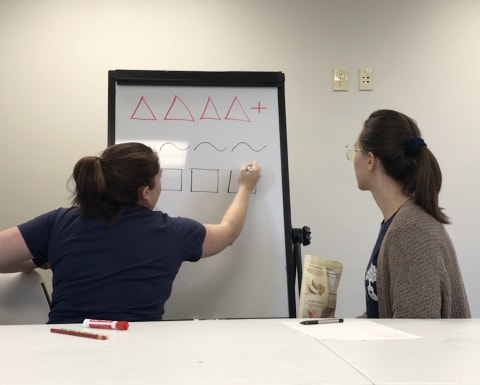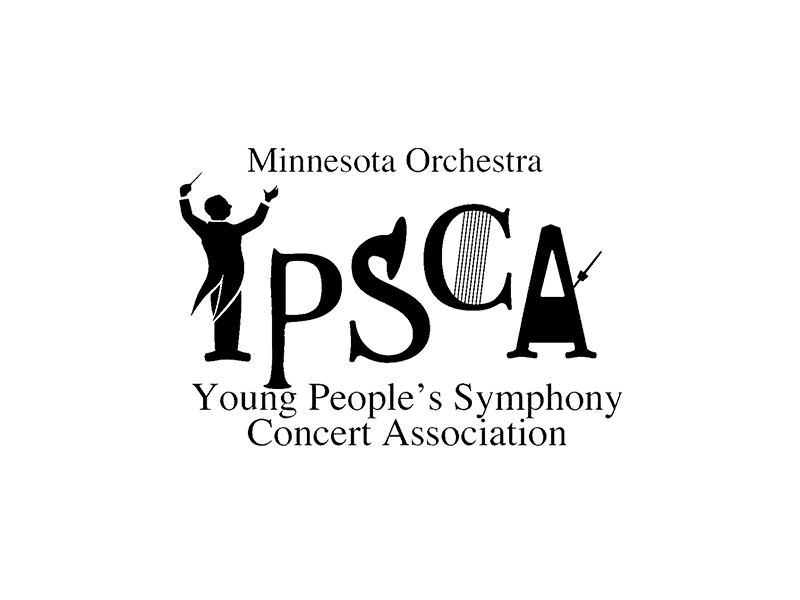American Voices
What is American music? Learn more about many unique voices and styles in this Young People’s Concert Experience recommended for grades 3-6. Enjoy a concert video featuring performances by Minnesota Orchestra musicians and commentary from host Sarah Hicks, along with opportunities to respond to the music through drawing and dance. There are also instrument demonstrations, information about the featured music and composers, and multisensory activities from Twin Cities partners exploring the “American Voices” theme.
Guide to the Orchestra
See instruments in action, as demonstrated by Minnesota Orchestra musicians.
About the Composers
Jessie Montgomery
A native of Manhattan’s Lower East Side, Jessie Montgomery is among the foremost composers of her generation. Active as a composer, violinist and educator, for two decades she has been affiliated with The Sphinx Organization, and she currently serves as composer in residence for The Sphinx Virtuosi, the Organization’s premier performing ensemble. The Mannes School of Music in New York recently appointed her to its composition and violin teaching faculties.
Among Montgomery’s most frequently-performed works is Strum, originally composed in 2006 for the Providence String Quartet and guests of Community MusicWorks Players. She offers these comments on the work: “Originally conceived for the formation of a cello quintet, the voicing is often spread wide over the ensemble, giving the music an expansive quality of sound. Within Strum I utilized texture motives, layers of rhythmic or harmonic ostinati that string together to form a bed of sound for melodies to weave in and out. The strumming pizzicato serves as a texture motive and the primary driving rhythmic underpinning of the piece. Drawing on American folk idioms and the spirit of dance and movement, the piece has a kind of narrative that begins with fleeting nostalgia and transforms into ecstatic celebration.”
Jennifer Higdon
In 1998, American composer Jennifer Higdon became one of many to incorporate the Amazing Grace into a larger composition, using it as the basis for the eighth and final movement of her choral work Southern Grace—a section she dedicated to the memory of her younger brother Andrew Blue Higdon, who had just passed away. Five years later she adapted the Amazing Grace movement at the request of the Ying String Quartet, and she has since also crafted versions for viola quartet and string orchestra.
Higdon’s Amazing Grace melody begins with the familiar hymn melody slowly presented by the cello in its upper register; the strings then play variations on the tune, everything rooted in the C-major scale. Violin and viola play a duet passage as the tempo quickens, and they are then joined by their cohorts for more variations. In the final minute, the key jumps up a step to D major, giving a bright sheen to the melody’s final full statement. The conclusion is soft and slow, the tension of a sustained pause resolved with one last major chord.
Louis Ballard
Louis Wayne Ballard made it his life’s work as a composer, educator, author and artist to share music that integrated Western classical traditions with Indigenous American culture. A Quapaw-Cherokee Indian born in Oklahoma in 1931, he created his own unique style of music that blended these cultures and expressions. “My hope,” he once said, “is to have Indian music evaluated on its own terms for its coherence as well as its intrinsic musical values. Only in this way will America have a music tradition truly its own.”
Ritmo Indio: A study in American Indian Rhythms was written for the Dorian Woodwind Quintet, who gave the world premiere of the work on March 8, 1969, in Santa Fe, New Mexico. For this piece, Ballard received the first-ever Marion Nevins MacDowell Award for a chamber music composition. The second movement (Soul) includes solos written originally for the Sioux flageolet, or Lakota courtship flute—in this performance played on the soprano recorder by oboist John Snow. The theme carried throughout this movement references a paddling song from the Tlingit Indians of Alaska, as they carried the bodies of their dead over the water, singing of their spirits.
Paquito D’Rivera
Born in Havana in 1948, D’Rivera has straddled the Latin jazz and classical music worlds in a wide-ranging career spanning more than six decades. His earliest steady jobs included playing clarinet and saxophone with the Cuban National Symphony Orchestra and directing the Orquesta Cubana de Música Moderna. A turning point in his life came in 1980 when he defected to the U.S. He has since performed solo engagements with ensembles across the world, collaborated on a recording of his chamber compositions with Yo-Yo Ma, and received commissions from a variety of institutions.
Paquito D’Rivera’s Four Pieces for Brass Quintet date from 2002, and comprise a quartet of movements ranging from three to five minutes, colorfully scored and each with their own personality. The third movement, El Cura, is full of jazz harmonies as well as muted brass in key moments.
-
BORN: June 4, 1948, Havana, Cuba
-
COMPOSED: 2002
Steve Heitzeg
Steve Heitzeg grew up on his family’s dairy farm in south-central Minnesota, which partially accounts for his many works written in celebration of the natural world. The philosophy that guides Heitzeg’s musical spirit is “the peaceful coexistence of all species through music,” through which he addresses social and ecological issues.
American Nomad was commissioned by Paul and Margot Grangaard for Charles Lazarus, to whom it is also dedicated, and who premiered the work with the Minnesota Orchestra on April 10, 2015.
The work, the composer writes, “is intended as a sonic meditation across the nation—starting in New York City, then moving through the South, the Great Plains and North, and on to the West and California. I wanted to create a series of soundscapes in the concerto that depict various American landscapes: the Statue of Liberty, fields across America, Joshua Tree National Park, the high desert, Redwood trees, the Golden Gate Bridge and the Pacific Ocean at the California coast.”
-
BORN: October 15, 1959, Albert Lea, Minnesota
-
PREMIERE: April 30, 2015

“Your Story, Our Story” At Home Art
Create artwork of a place that makes you feel most at home, with local artist Lucy Michell.

Tell Your Story Through Dance
Express yourself through movement and dance with this activity from the Walker Art Center.

Write Your Own Music
Join Toneworks Music Therapy Services to discover how you can make unique music with objects found around your house.
Sponsored By
Thomas* and Mary Lou Detwiler
Mary Ann Feldman Music Education Fund
Corporate Sponsors






